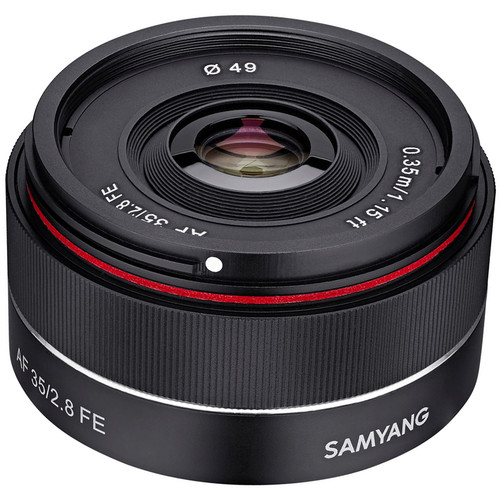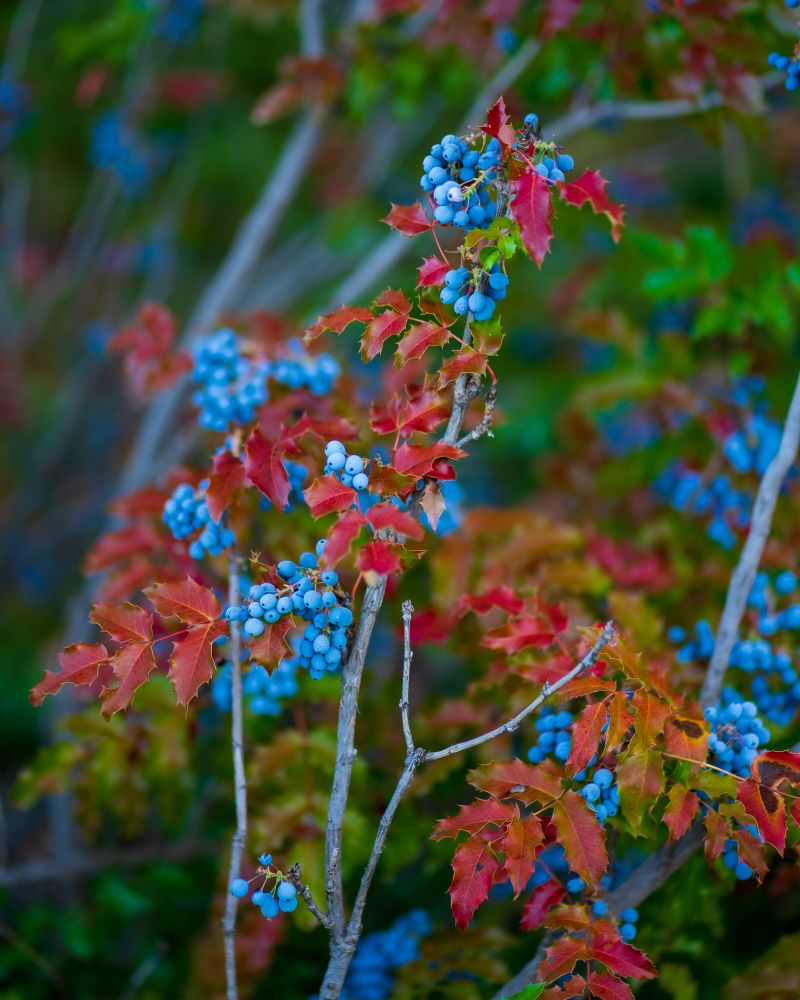
So, you just scored a used or refurbished A7ii or A7iii, and it was so affordable that you still have extra money to spend on a good beginner lens, right? What about THREE good beginner lenses? Well, you’re in exactly the right place: this article will help you invest just about $1000 total, in not just one, not two, but the three best entry-level prime lenses for Sony’s FE full-frame mirrorless camera bodies!
Of course, we’ll also mention a couple of additional options, if you have a slightly bigger budget, or if you’re interested in similar focal lengths, or different types of photography. Also, stay tuned for additional articles on the best professional-grade Sony FE mount prime lenses, as well as zoom lenses for beginners and pros too!
Sony FE 50mm f/1.8

While other full-frame mirrorless systems skipped the traditional concept of “nifty fifty”, and made their bread-and-butter 50mm’s rather pricey, (or downright expensive) Sony has stayed faithful to offering a budget-friendly option for this simple yet essential prime lens- the 50mm f/1.8.
On the one hand, it’s a no-frills, basic lens. There’s no AF/MF switch, no custom function button, and no aperture ring. Also, there are no focus distance markings at all, but that is becoming normal these days for most electronic mirrorless lenses.

On the other hand, it delivers the goods: It’s quite sharp, especially at ~f/2.8, even on the high-megapixel A7R3 and A7R4. Plus, it delivers reliable, snappy autofocus. It’s built quite well considering its ~$200 price tag, and will likely last you a very long time.
It’s also one of the most portable kits around, for full-frame cameras. Mounted on a Sony A7Riii or A7iii, you’ll look like just another casual photographer, which can be a great advantage if you’re either trying to shoot relaxed candid moments in an intimate setting, …or trying to avoid attracting the attention of thieves in a highly public area or tourist destination.

What if you’ve got tons of money to spend, though, and you want a really amazing 50mm? You can always get the Sony Sonnar T&* FE 55mm f/1.8 ZA, one of the most legendary f/1.8 “nifty fifty” lenses ever. That, however, is a $900-1,000 lens, so you really shouldn’t be investing that much money in a single prime lens until you’ve got your whole lineup filled.
The advice I always give to beginner photographers who are lens shopping is this: Don’t spend a huge amount on any one lens until you know that focal length is going to be your absolute favorite. I’ve lost count of how many photographers I’ve met who spent a ton of money on one lens, but got a cheap, junky lens in another focal length, …only to realize that their style was growing on the direction of the cheap lens, not the expensive one!
For that reason, each of the three lenses recommended in this article can be considered a solid investment for a beginner. However, also, all of these lenses are good enough quality that even if you really do fall in love with that focal length, you’ll still feel like you made a good investment.
Pros:
- Great overall image quality
- Fantastic portability
- Budget-friendly
Cons:
- No-frills design (not GM or ZA)
Availability:
Samyang/Rokinon 24mm f/2.8 FE

Mirrorless systems have always bragged about being much lighter and smaller than DSLR systems, but to be honest many full-frame mirrorless lenses simply don’t offer much better portability. In fact, most of the “flagship” primes and zooms in Sony FE mount are just as big and heavy as their DSLR competition! Aside from the aforementioned Sony 50mm f/1.8, we really haven’t seen “tiny” Sony FE lenses, until…
Rokinon is now changing that, with a whole bunch of absolutely tiny prime lenses. Seriously, they really are downright dinky!
(In case you’re wondering- yes, “tiny” and “dinky” are exact measurements; they indicate a body-with-lens-attached can fit into my large jacket pocket!)

Of course, the type of photography that you’re into may incline you to choose one wide-angle prime instead of another, but 24mm is a pretty awesome wide-angle focal length for many different kinds of photography. In that category, there is no lens that comes even close to matching the impressive balance of portability, affordability, and image quality that the Rokinon 24mm f/2.8 offers.
Oh, one thing it’s great for, by the way, is vlogging! If you’re an aspiring Youtuber and you want to vlog on a full-frame setup but you are on a budget, then you’ll love how lightweight this lens is, plus it has a great wide-angle focal length. (If you can hold the camera far enough away from your face, otherwise, something wider is better!)
Is it perfect? Absolutely not. It’s got a fair bit of vignetting (at any aperture, not just wide-open), its distortion is a bit wobbly, and the amount of flare could be annoying if you like to shoot into the sun, but don’t actually want that warm haze. (Which most portrait photographers do usually want if they’re putting the sun in the frame, admittedly. Lastly, it’s decently sharp in the center of the frame, but the corners are not flawless.
But, you know what? The whole point of this lens is its affordability and portability. You buy it because you just want to cover a wide-angle focal length, even if you’re not going to make it your go-to lens for every single shot.

Of course, if you’re more into portraiture and casual photography than landscape or nightscape photography, Samyang/Rokinon still have you covered: Instead of the 24mm f/2.8 FE, check out the 35mm f/2.8 FE! It costs exactly the same as the 24mm and is just as tiny, portable, and optically stellar.
Or, hey, let’s say you’re “hardcore” about landscapes and nightscapes, and maybe you want to go even wider than 24mm? Once again, Samyang/Rokinon has a surprisingly affordable, portable option on the horizon: The AF 18mm f/2.8 FE. It’s not available just yet, but if it’s anything like the 24mm and 35mm, it may not be perfect but it’ll be worth a$400 price tag.
On a budget, but want the sharpest wide-angle Sony FE lens around? The Sony FE 35mm f/1.8 is $750, which is a bit more than any Rokinon/Samyang (or Sigma) option, but that’s because this truly is the sharpest 35mm of the sub-$1K bunch, and it’s half the price of the new Sigma 35mm f/1.2 FE!
Pros:
- Truly tiny, portable size
- Incredibly affordable
Cons:
- Image quality not perfect, vignetting never fully disappears
- Not “indestructible” quality construction
Availability:
Sony FE 85mm f/1.8

Last, but certainly not least if you’re at all into portraits or candid photography of any kind, we have the popular 85mm prime. A must-have starter lens, indeed, and a bread-and-butter professional lens, too!
This $550-600 lens is Sony’s most affordable 85mm option, but don’t let that fact fool you. It is well-built, mechanically, and quite impressive, optically.

Compared to the “insanely expensive” flagship 85mm primes out there, you might want to stop down to f/2.2 or f/2.8 in order to get the sharpest results, but on a full-frame sensor that is still plenty of shallow DOF and “creamy bokeh” for a beautiful portrait. Also, one of the most important considerations of a portrait prime in particular is how softly it can render a subject, while still offering enough sharp detail, and in that regard you’ll definitely enjoy what this full-frame lens offers wide-open at f/1.8 in terms of smooth bokeh and in-focus detail.

85mm is a top choice for portraits because it offers a great working distance between you and your subject; whether you’re photographing a head and shoulders close-up portrait, or a head-to-toe full-body portrait, you’ll get a great balance of blurry background and in-focus subject.

Once again, if you know you’re already in love with 85mm, though, you might decide to instead pony up a bit more for a moderately high-end 85mm. There are some great ones that go for well over $1K, of course, but if you’re still on a decent budget and yet looking for something that even a pro could rely on, check out the Rokinon AF 85mm FE. At $600-700, it’s an affordable way to get to f/1.4 and still have good image quality.
Pros:
- Compact & lightweight, yet durable
- Affordable for a full-frame 85mm prime
Cons:
- F/1.8, instead of f/1.4 or f/1.2
- Sharpest results need to be stopped down to f/2.8
Availability:
Conclusion | Primes For Beginners (On Any Budget) With Sony Full-Frame
One of the main advantages of Sony’s FE system today is the fact that it has been around for nearly 6 years. This means that not only are there a lot of great lenses to choose from in any budget, but there are also a whole lot of affordable used/refurbished bodies, making it easier than ever for a beginner photographer to start with a full-frame setup!
Of course, if you’re looking for the absolute ultimate setup in terms of portability, then an APS-C system (1.5x crop) or Micro Four Thirds system can’t be beaten. But, if you can afford a full-frame setup, including three great prime lenses that come in at just about $1K, then why not go for it?

Whether you’re into casual photography of any kind, or something specific like portraiture or landscapes, you’ll find that this trio of lenses suits your needs perfectly.
Of course, investing in the gear and learning which focal lengths you prefer the most is only the first step! Without vision, passion, and additional guidance for both technical and creative growth, lenses and cameras are just tools. Thankfully, we have created a complete set of photography education (a lot of it is free!) to help you on your journey. Of course, if you have any other questions about the lenses mentioned in this article or a similar option, please leave a comment below!
Matthew Saville
Follow his wilderness nightscape adventures on Instagram: instagram.com/astrolandscapes




Get Connected!